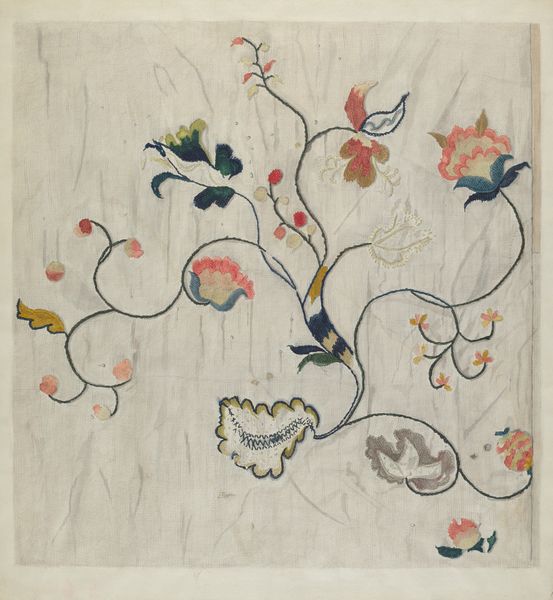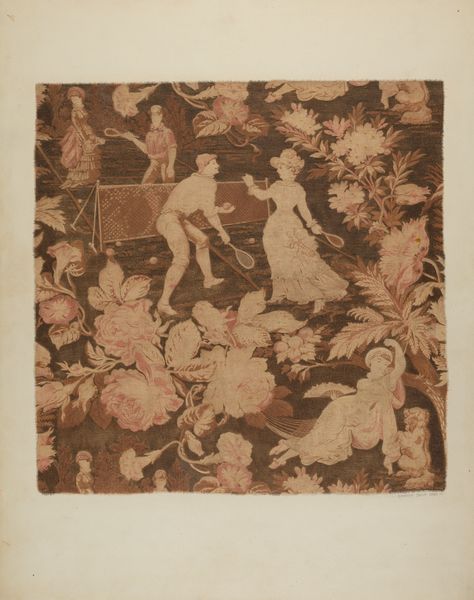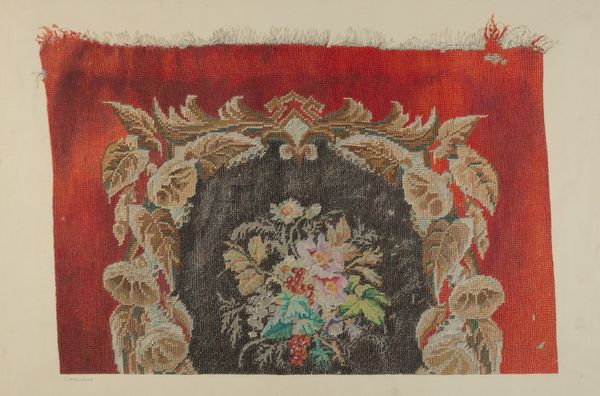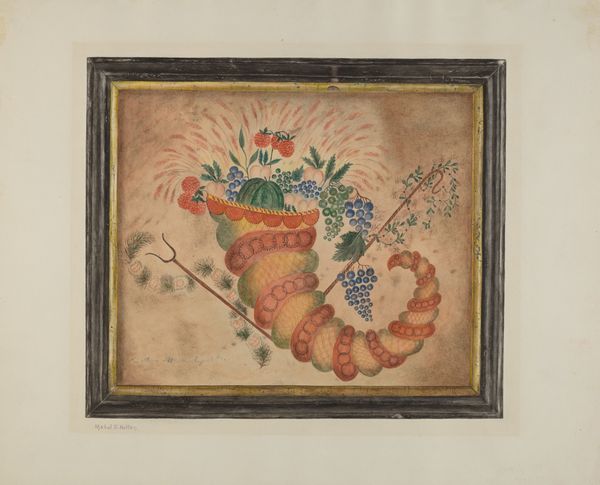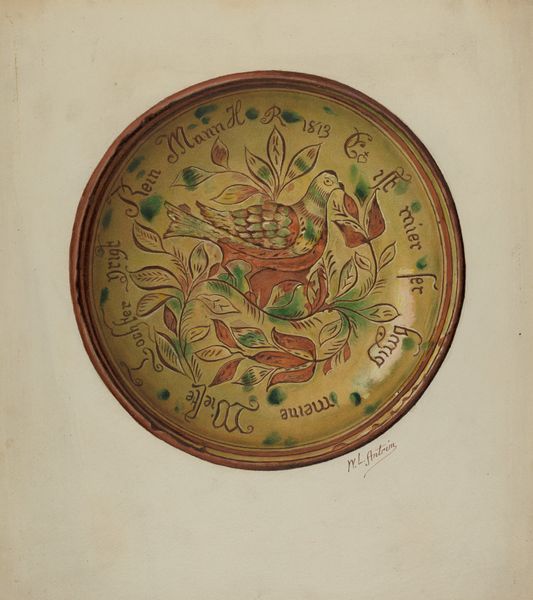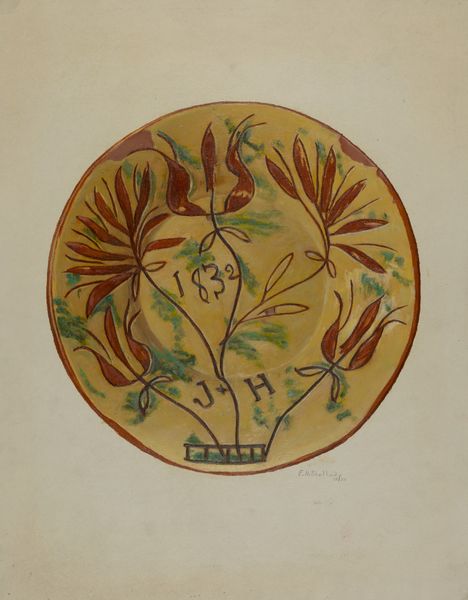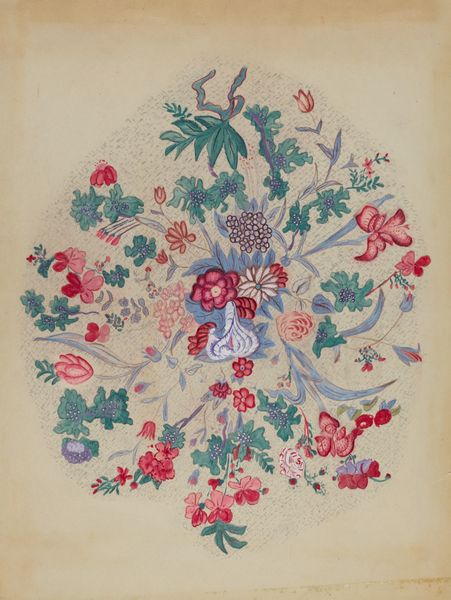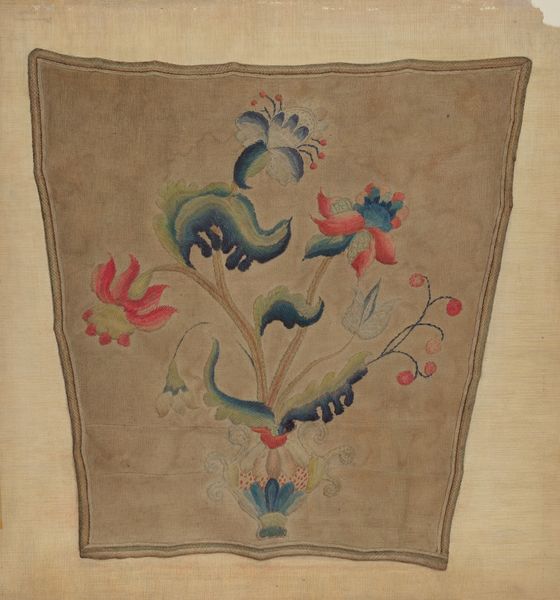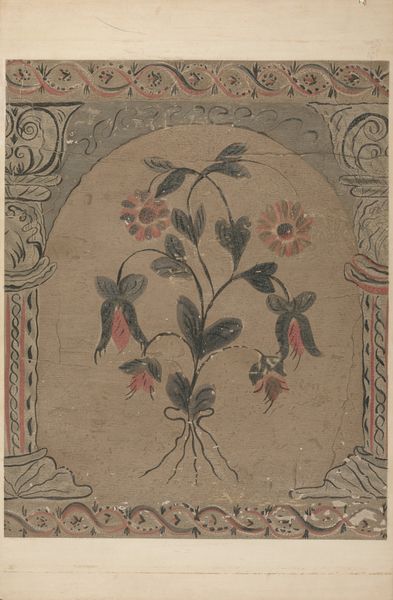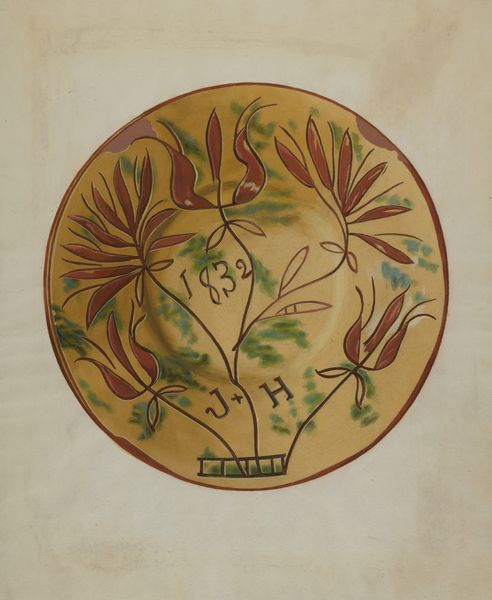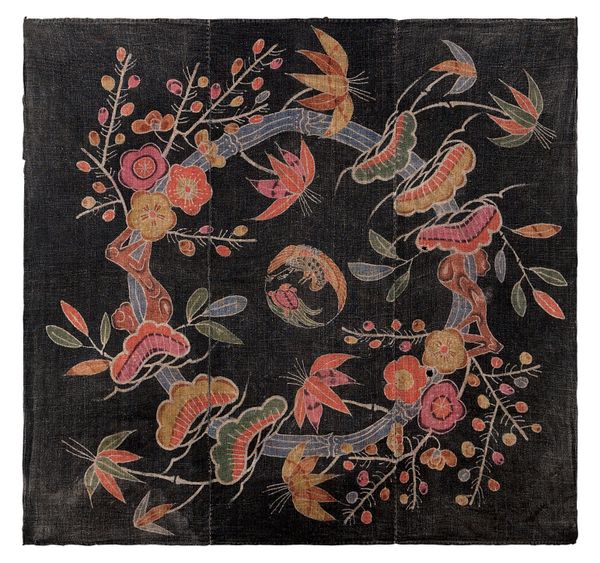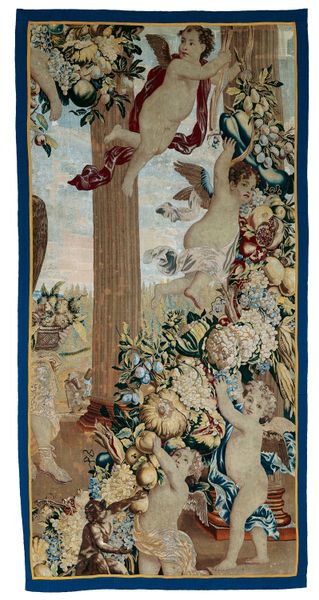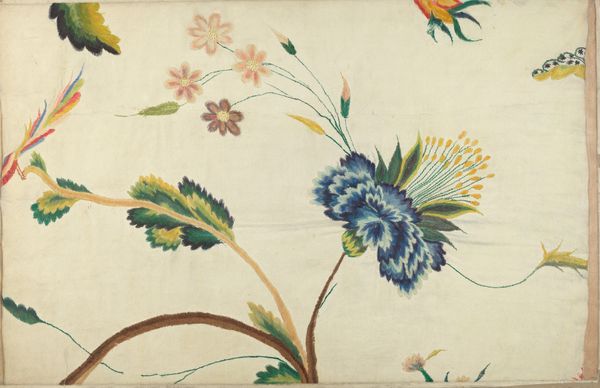
textile
#
portrait
#
landscape
#
textile
#
figuration
#
folk-art
#
genre-painting
Dimensions: 7 5/8 x 7 5/8 in. (19.4 x 19.4 cm)
Copyright: Public Domain
Curator: Here we have "Embroidered Picture," crafted between 1751 and 1757 by Mary Wright, a fascinating piece rendered entirely in textile. What is your immediate reaction to its presentation? Editor: Well, its charmingly naive aesthetic strikes me first. The pastoral setting is almost dreamlike. The rendering of the human form is simplified, yet it exudes a specific energy. Curator: Precisely. Let's analyze the composition. Note how Wright structures the pictorial space with a central figure framed by flora and fauna. Observe the chromatic balance; how the bold red of the dress contrasts against the softer blues and greens, achieving a visually arresting equilibrium. Editor: I’m curious about the societal role this embroidery played for Wright. Needlework was a space in which women could exercise creativity and, to an extent, authorship in a period when avenues for formal artistic training were restricted. Could we read this scene as a self-portrait reflecting Wright’s own agency, framed within her lived environment? Curator: That is a very astute observation. Notice too the inclusion of text – the explicit inscription of “SPRING” embedded at the lower registers of the embroidery, situating the subject in a broader allegorical tableau. This highlights the integration of text and image and expands our semiotic interpretation of the artwork. Editor: The rabbits and butterflies also seem significant; aren’t these often read as symbols of fertility or transformation? This artwork thus appears laden with layered meanings of rebirth and growth that apply to both the woman and the natural world around her. How does it stand apart, then, from other examples of embroidered samplers and folk art? Curator: By the unique confluence of artistic intent and formal execution – how Wright merges allegorical symbolism with personalized iconography to create a textile-based aesthetic that transcends the functional purpose. Editor: Looking closer at "Embroidered Picture," I appreciate the tactile sense of history it emanates, weaving together personal narratives and collective experiences within its very fibers. Curator: Absolutely. It serves as an extraordinary visual statement. The piece truly embodies an exquisite blend of art and societal representation, allowing us a captivating look into eighteenth-century artisanal tradition.
Comments
No comments
Be the first to comment and join the conversation on the ultimate creative platform.
